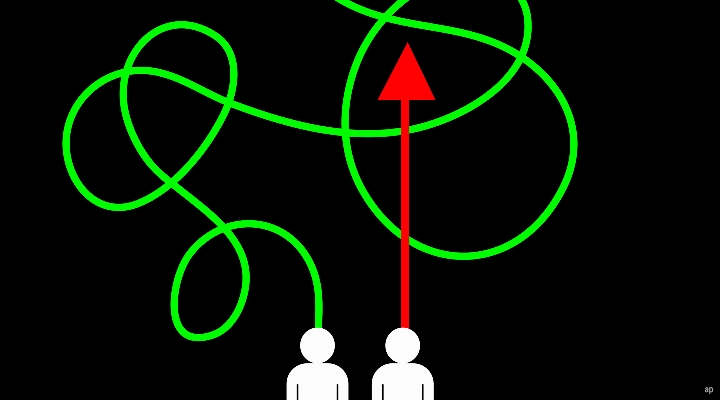
"Dark patterns are design features used to deceive, steer, or manipulate users into behaviour that is profitable for an entity offering a product or service, but they are often harmful to users." – Rohit Chopra, Consumer Financial Protection Bureau
If you’re familiar with behavioural finance, you likely know about the power of a good nudge.
Nudges are small changes to a choice environment that lightly prod a consumer toward behaviours that are personally or socially beneficial (such as auto-enrolment in retirement savings plans or organ donation programs). Nudges often reduce friction to make processes simpler and easier. They are the result of behavioural science being put to work in the best interest of the consumer.
Cass Sunstein, the man who made "nudge" a household word with his classic behavioural science book, recently brought the more nefarious side of behavioural product and service design to light in his latest book: "Sludge."
Sludge is like an anti-nudge, introducing friction or complexity to discourage actions that may be in the best interest of the customer, but not the vendor.
You’ve likely encountered sludge in the form of bureaucratic red tape, pop-up ads that hide a minuscule "close" button in a corner and make the link to the website look like an exit button instead, or subscriptions that are easy to initiate but difficult to cancel.
Sludge is part of a larger class of nefarious product and service design methods known as dark patterns. These design methods may be odious, but they are often legal and frustratingly common. Since the onus is on consumers to spot and avoid products and services with Machiavellian attributes, this article offers a brief overview of how and where you might encounter dark patterns in the world of finance.
Deception by Design
Dark patterns are design features engineered to coerce users into doing something they would otherwise prefer not to do. A four-pack of yogurt – when there are five school days in a week – compels parents to buy more than they want.
In video games, "grinding" requires a player to invest hours building a character’s abilities before real gameplay. Hours in the game are habit-forming and can contribute to addiction.
In September 2022, the Federal Trade Commission reported a rise in sophisticated dark patterns designed to trick consumers into buying products and giving away their personal information. The report, entitled "Bringing Dark Patterns to Light," describes four major types of dark patterns to watch out for.
1. Design Elements That Induce False Beliefs
- False or misleading claims;
- Ad elements designed to look like objective, editorial content;
- Comparison sites that appear neutral but rank according to compensation from vendors;
- Countdown timers for offers that are not actually time-limited.
2. Design Elements That Hide or Delay Disclosure of Material Information
- Burying key terms of service within dense Terms of Service documents that customers don’t see before purchase;
- Fee information hidden within tooltip buttons where customers are unlikely to see them;
- Drip pricing, in which the advertised cost is lower than the actual cost because of many small additional fees that are added at the point of sale.
3. Design Elements That Lead to Unauthorised Charges
- Free trials followed by recurring subscription charges if not canceled in time, disclosed only by a statement that “terms and conditions apply”;
- Initial authorisations followed by deceptive add-on charges. For example, a child’s game that automatically charges the parent’s Google account, where a green button that normally advances the child to the next level is suddenly replaced with a green, "buy" button that initiates an additional in-app purchase.
4. Design Elements That Obscure or Subvert Privacy Choices
- Not allowing users to definitively reject data collection or use;
- Repeatedly prompting users to select settings they wish to avoid;
- Confusing toggle settings;
- Obscuring privacy choices to make them hard to access;
- Default settings that maximize data use and sharing.
Dark Patterns in Finance
One Princeton University study analysed online shopping sites and found more than 1,800 instances of dark patterns, representing 15 different types.
In financial products, dark patterns can take the form of exorbitant interest, expensive surrender clauses, or hidden fees. Misdirection, obscured pricing, misinformation or intentional obfuscation, and hidden costs are common dark patterns.
Here are some examples in financial products.
1. Predatory Lending
- Equity stripping, where lenders make loans based on equity in the home regardless of borrower’s ability to repay;
- Bait-and-switch, where lenders promise one type of loan but without good reason switch to a less advantageous one late in the process;
- Loan flipping, where a lender sells a loan and the customer is faced with paying points or fees;
- Hidden balloon payments, where what is presented as a long-term loan with a low interest rate is revealed at closing to be a short-term loan that must be refinanced in a few years.
2. Misleading Advertising
- Wholesale investment ads targeted at "mom and pop" retail investors;
- High-pressure sales tactics with artificial urgency, pushing investors to get in quick.
3. Hidden or Obscured Fees and Payment Schemes
- Loads, 12b-1 fees, management fees, trade commissions, and account fees can be legitimate but are often obscured or hidden from investors who do not know to look for them;
- Annuity commissions, surrender fees, and rollover fees (ask about these before signing);
- Early withdrawal fees that are not well-disclosed;
- Inactivity fees, administrative fees, and beneficiary fees hidden in dense and complex terms and conditions.
4. Outright Scams
- "Boiler room" scams, where professional cold-callers convince inexperienced investors to buy shares in worthless or overpriced investments;
- Ponzi schemes, where a scammer takes money from a victim, then takes money from a second victim to pay back the first, and so on, creating the illusion of solvency.
- Share scams, where someone posing as a broker takes money for investments they never intend to make on the investor’s behalf.
Buyer Beware
As research into dark patterns continues, no doubt we will see more and more tools for recognising them and flagging problematic products and services with ease. We will one day be able to have artificial intelligence scan the terms and conditions of a product or service and report dark patterns in milliseconds. This is not possible today.
For now, investors must educate themselves about how both financial and technological products are constructed and scrutinise the marketplace for products that are transparent and sludge-free. If you want to dive deeper, the links throughout this article will take you to additional resources for identifying bad actors in the marketplace so you can spot them before they target you.




























